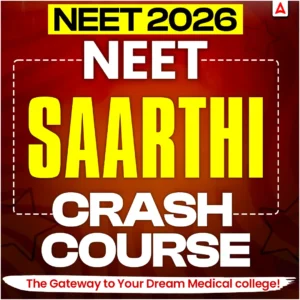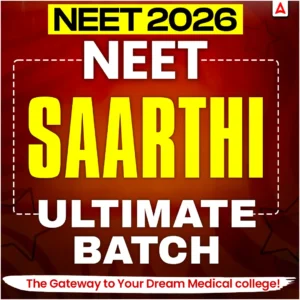The National Testing Agency (NTA) will release the NEET 2026 syllabus on its official website. This NTA syllabus will help students preparing for the medical entrance exam know exactly which topics to study from Physics, Chemistry, and Biology (Botany and Zoology). The syllabus will be based on the Class 11 and Class 12 curriculum, with NCERT guidelines serving as the foundation. Students who have finished Class 12 or are appearing for their final exams can use the NEET 2026 syllabus to plan their preparation. The updated syllabus is expected to be released soon.
NEET Syllabus 2026 PDF by NTA official website
Access to the most recent NEET syllabus allows candidates to focus their efforts on the most relevant topics, eventually enhancing their chances of success in NEET 2026. Scroll down to see the NEET unit weightage, as well as free PDF downloads of the NEET syllabus 2026.
Biology NEET Syllabus 2026
Biology NEET Syllabus 2026 is the majority of the question paper because it includes botany and zoology sections. The syllabus is available here, along with units and subjects.
This NEET Biology paper will be used to ask 90 out of 180 questions. So, go through 10 units and prepare properly.
| Units | Topics Distribution |
| Unit 1 – Diversity in the Living World | What is living? Biodiversity; Need for classification Taxonomy & Systematics; Concept of species and taxonomical hierarchy; Binomial nomenclature Five kingdom classification: Monera, Protista, Fungi; Lichens; Viruses and Viroids Plant classification: Algae, Bryophytes, Pteridophytes, Gymnosperms Animal classification: Non-chordates (up to phylum) and chordates (up to class) |
| Unit 2 – Structural Organisation in Animals and Plants | Morphology and modifications; Tissues Anatomy and functions of root, stem, leaf, inflorescence, flower, fruit, seed Plant families: Malvaceae, Cruciferae, Leguminosae, Compositae, Gramineae Animal tissues Morphology and anatomy of frog systems – digestive, circulatory, respiratory, nervous, reproductive |
| Unit 3 – Cell Structure and Function | Cell theory; Prokaryotic and eukaryotic cells; Plant and animal cell structure Cell envelope, membrane, cell wall Cell organelles: ER, Golgi bodies, lysosomes, vacuoles, mitochondria, ribosomes, plastids, microbodies, cytoskeleton, cilia, flagella, centrioles, nucleus Biomolecules: Proteins, carbohydrates, lipids, nucleic acids; Enzymes Cell cycle: Mitosis and meiosis |
| Unit 4 – Plant Physiology | Photosynthesis: Site, pigments, phases, C₃ & C₄ pathways, photorespiration, factors affecting Respiration: Gas exchange, glycolysis, fermentation, TCA cycle, electron transport system, energy relations Plant growth & development: Seed germination, phases, growth regulators – auxin, gibberellin, cytokinin, ethylene, abscisic acid |
| Unit 5 – Human Physiology | Breathing & respiration: Human respiratory system, regulation, disorders (Asthma, Emphysema, etc.) Body fluids & circulation: Blood, lymph, heart structure, cardiac cycle, disorders Excretion: Human excretory system, urine formation, disorders (Uraemia, nephritis, etc.) Locomotion & movement: Muscle contraction, skeletal system, disorders Neural control & coordination: Nervous system, impulse generation Chemical coordination & regulation: Endocrine glands, hormones, disorders (Dwarfism, Diabetes, etc.) |
| Unit 6 – Reproduction | Sexual reproduction in flowering plants: Gametophytes, pollination, fertilisation, seed & fruit formation Human reproduction: Male & female reproductive systems, gametogenesis, menstrual cycle, fertilisation, pregnancy, lactation Reproductive health: STD prevention, contraception, MTP, infertility, ART (IVF, ZIFT, GIFT) |
| Unit 7 – Genetics and Evolution | Heredity & variation: Mendelian inheritance, deviations, chromosome theory, sex determination, genetic disorders Molecular basis of inheritance: DNA & RNA structure, replication, transcription, translation, gene regulation, Human Genome Project, DNA fingerprinting Evolution: Origin of life, evidences, Darwin’s theory, mechanisms (natural selection, genetic drift), Hardy-Weinberg principle, human evolution |
| Unit 8 – Biology and Human Welfare | Health & disease: Pathogens (Malaria, Typhoid, Dengue, etc.), basics of immunology, Cancer, HIV/AIDS, adolescence issues Microbes in human welfare: Food processing, industrial uses, sewage treatment, biocontrol, biofertilisers |
| Unit 9 – Biotechnology and Its Applications | Principles & processes of biotechnology: Genetic engineering Applications: Production of insulin, vaccines, gene therapy, GMOs, transgenic animals Biosafety, biopiracy, patents |
| Unit 10 – Ecology and Environment | Organisms & environment: Interactions (mutualism, competition, etc.) Ecosystem: Patterns, components, energy flow, ecological pyramids Biodiversity & conservation: Patterns, importance, threats, conservation strategies (hotspots, reserves, national parks) |
Physics NEET syllabus 2026
Prepare these 20 units from the NEET Physics syllabus. These in-depth topic distributions will definitely help you prepare better!
| Unit Name | Topics |
| 1. Physics and Measurement | Units of measurements, System of Units, SI Units Fundamental and derived units Least count, significant figures Errors in measurements Dimensions of physical quantities, dimensional analysis and applications |
| 2. Kinematics | Frame of reference, motion in a straight line Position-time graph, speed, and velocity Uniform and non-uniform motion, average speed, instantaneous velocity Uniformly accelerated motion, velocity-time & position-time graphs Relations for uniformly accelerated motion Scalars and vectors, vector addition and subtraction, scalar and vector products Unit vector, resolution of a vector, relative velocity Motion in a plane, projectile motion, uniform circular motion |
| 3. Laws of Motion | Force and inertia, Newton’s First Law Momentum, Newton’s Second Law, impulse Newton’s Third Law, law of conservation of linear momentum and applications Equilibrium of concurrent forces Static and kinetic friction, laws of friction, rolling friction Dynamics of uniform circular motion: centripetal force, applications (level and banked roads) |
| 4. Work, Energy, and Power | Work done by constant and variable force Kinetic and potential energy, work-energy theorem Power, potential energy of spring Conservation of mechanical energy Conservative and non-conservative forces Motion in a vertical circle Elastic and inelastic collisions in 1D and 2D |
| 5. Rotational Motion | Centre of mass of a two-particle system & rigid body Moment of a force, torque, angular momentum, conservation and applications Moment of inertia, radius of gyration Values of moment of inertia for simple geometrical objects Parallel and perpendicular axes theorems and applications Equilibrium of rigid bodies Rotational motion equations, comparison with linear motion |
| 6. Gravitation | Universal law of gravitation Acceleration due to gravity, variation with altitude and depth Kepler’s laws of planetary motion Gravitational potential energy, gravitational potential Escape velocity Motion of satellite: orbital velocity, time period, energy |
| 7. Properties of Solids and Liquids | Elastic behaviour, stress-strain relationship, Hooke’s Law Young’s modulus, bulk modulus, modulus of rigidity Pressure due to a fluid column, Pascal’s law and applications Effect of gravity on fluid pressure Viscosity, Stokes’ law, terminal velocity Streamline & turbulent flow, critical velocity Bernoulli’s principle and applications Surface energy & tension, angle of contact, excess pressure in drops/bubbles Capillary rise Heat, temperature, thermal expansion Specific heat, calorimetry, latent heat Heat transfer: conduction, convection, radiation |
| 8. Thermodynamics | Thermal equilibrium, Zeroth law Heat, work, internal energy First law of thermodynamics, isothermal & adiabatic processes Second law of thermodynamics, reversible & irreversible processes |
| 9. Kinetic Theory of Gases | Equation of state of a perfect gas, work on gas compression Assumptions of kinetic theory Concept of pressure, kinetic interpretation of temperature RMS speed of gas molecules Degrees of freedom, law of equipartition of energy, applications to heat capacity Mean free path, Avogadro’s number |
| 10. Oscillations and Waves | Oscillations & periodic motion, time period, frequency, displacement-time relation Periodic functions, SHM equation, phase Oscillations of a spring, energy in SHM Simple pendulum (time period derivation) Wave motion: longitudinal & transverse Speed of travelling wave, displacement relation Superposition principle, reflection of waves Standing waves in strings & organ pipes (fundamental mode & harmonics) Beats |
| 11. Electrostatics | Electric charges, conservation of charge Coulomb’s law for point/multiple charges, superposition principle Electric field, field lines, dipole & torque on dipole Electric flux, Gauss’s law and applications Electric potential (point charge, dipole, system of charges) Potential difference, equipotential surfaces Electrical potential energy of system of charges Conductors, insulators, dielectrics, polarization Capacitors & capacitance, series & parallel combination Parallel plate capacitor (with/without dielectric) Energy stored in capacitor |
| 12. Current Electricity | Electric current, drift velocity, mobility Ohm’s law, resistance, V-I characteristics Electrical energy & power Resistivity, conductivity, series & parallel resistors Temperature dependence of resistance Internal resistance, EMF, cells in series & parallel Kirchhoff’s laws, Wheatstone bridge, Metre bridge |
| 13. Magnetic Effects of Current and Magnetism | Biot-Savart law (circular loop), Ampere’s law (straight wire, solenoid) Force on moving charge & current-carrying conductor Force between parallel currents (definition of ampere) Torque on current loop, moving coil galvanometer Current loop as magnetic dipole, bar magnet as solenoid Magnetic field lines, field due to dipole (axial & equatorial) Torque on magnetic dipole Para-, dia-, ferromagnetic substances Temperature effect on magnetism |
| 14. Electromagnetic Induction and Alternating Currents | Faraday’s law, Lenz’s law, eddy currents Self & mutual inductance AC: peak & RMS values, reactance & impedance LCR series circuit, resonance, power in AC, wattless current AC generator, transformer |
| 15. Electromagnetic Waves | Displacement current EM waves: nature, transverse property EM spectrum (radio → gamma) and applications |
| 16. Optics | Reflection, spherical mirrors, mirror formula Refraction (plane & spherical surfaces), lens formula & lens maker formula Total internal reflection & applications Magnification, power of lens, lens combinations Prism refraction, microscope, telescope (magnifying power) Wave optics: wavefront, Huygens’ principle, interference, diffraction, polarization |
| 17. Dual Nature of Matter and Radiation | Dual nature, photoelectric effect, observations by Hertz & Lenard Einstein’s photoelectric equation Matter waves, de Broglie relation |
| 18. Atoms and Nuclei | Alpha particle scattering, Rutherford model, Bohr model, hydrogen spectrum Composition & size of nucleus Mass-energy relation, mass defect, binding energy curve Nuclear fission & fusion |
| 19. Electronic Devices | Semiconductors, diode (I-V forward/reverse) Diode as rectifier, LED, photodiode, solar cell Zener diode (regulator) Logic gates: OR, AND, NOT, NAND, NOR |
| 20. Experimental Skills | Vernier calipers, screw gauge, simple pendulum, metre scale Young’s modulus, surface tension, viscosity Speed of sound, specific heat Resistivity & resistance (bridge methods) Diode characteristics, identification of components |
| NEET Physics Chapters | MCQ Link |
|---|---|
| Physics and Measurement | Click Here |
| Kinematics | Click Here |
| Laws of Motion | Click Here |
| Work, Energy, and Power | Click Here |
| Rotational Motion | Click Here |
| Gravitation | Click Here |
| Properties of Solids and Liquids | Click Here |
| Thermodynamics | Click Here |
| Kinetic Theory of Gases | Click Here |
| Oscillation and Waves | Click Here |
| Electrostatics | Click Here |
| Current Electricity | Click Here |
| Magnetic Effects of Current and Magnetism | Click Here |
| Electromagnetic Induction and Alternating Currents | Click Here |
Chemistry NEET syllabus 2026
The Chemistry NEET Syllabus 2026 includes physical, organic, and inorganic topics. Thus, the syllabus is designed accordingly. Scroll down to see which topics are covered in the current NEET 2026 syllabus.
| Parts | Units |
| Physical Chemistry Syllabus NEET | Unit 1 – Some Basic Concepts in Chemistry
Matter, Dalton’s atomic theory, atoms, molecules, elements, compounds Electromagnetic radiation, photoelectric effect, hydrogen atom spectrum Kossel-Lewis theory, ionic and covalent bonds System & surroundings, properties, state functions, process types Concentration units: molality, molarity, mole fraction, percentage Dynamic equilibrium, physical and chemical equilibria Oxidation, reduction, oxidation number, redox balancing Reaction rate, factors affecting rate, order & molecularity |
| Inorganic Chemistry Syllabus NEET | Unit 9 – Classification of Elements & Periodicity
Modern periodic law, periodic table, periodic trends (size, ionisation enthalpy, etc.) Group 13–18 elements, electronic configuration, periodic trends, first element anomalies Transition elements: properties, trends, compound preparation (K₂Cr₂O₇, KMnO₄) Werner’s theory, ligands, coordination number, denticity, chelation |
| Organic Chemistry Syllabus NEET | Unit 13 – Purification & Characterisation of Organic Compounds
Purification methods: crystallisation, sublimation, distillation, extraction, chromatography Unit 14 – Basic Principles of Organic Chemistry Tetravalency, hybridisation, functional groups, homologous series, isomerism, nomenclature Alkanes, alkenes, alkynes, aromatic hydrocarbons – preparation, properties, reactions Preparation, properties, substitution mechanisms, uses, environmental effects Alcohols, phenols, ethers: preparation, properties, reactions Unit 18 – Organic Compounds with Nitrogen Amines: nomenclature, classification, basic character, preparation, identification Carbohydrates, proteins, enzymes, vitamins, nucleic acids, hormones – structure & functions Functional group detection, compound preparation, titration principles |
Syllabus of NEET 2026 PDF download
Students should first review and download the NEET syllabus 2025 PDF free download for Physics, Biology, and Chemistry. Furthermore, candidates will benefit from knowing which topics will have the most queries. Download the officia NTA syllabus 2026- 2027 from here and check the topics.
| Topic | Direct PDF Link |
| NEET syllabus PDF By NTA | Click Here |









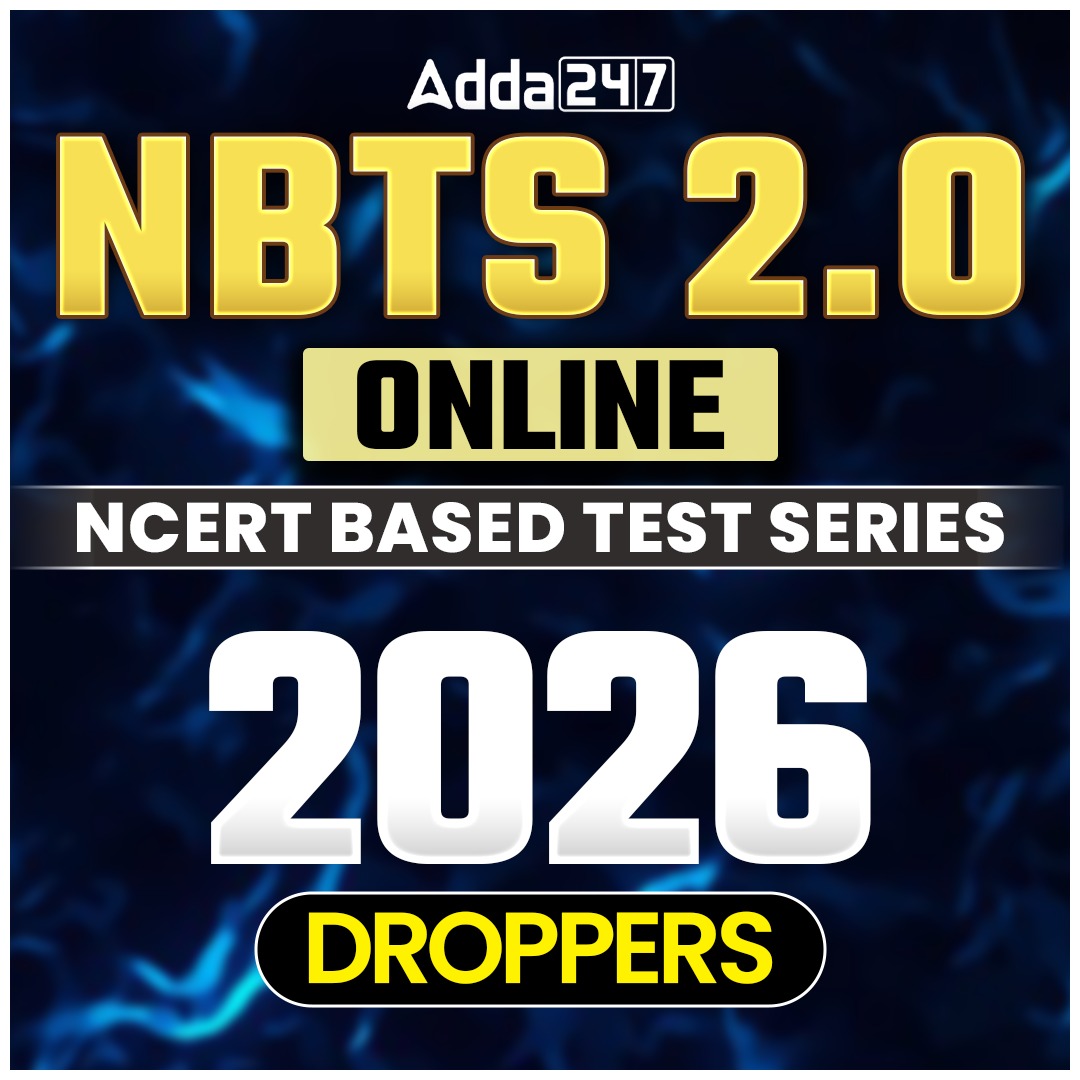
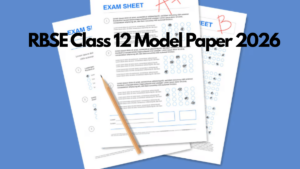 RBSE Class 12 Model Paper 2026 for Arts,...
RBSE Class 12 Model Paper 2026 for Arts,...
 SLAT Preparation 2026: Tips and Subject ...
SLAT Preparation 2026: Tips and Subject ...
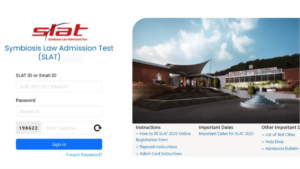 SLAT Result 2026 Release Date, Download ...
SLAT Result 2026 Release Date, Download ...
